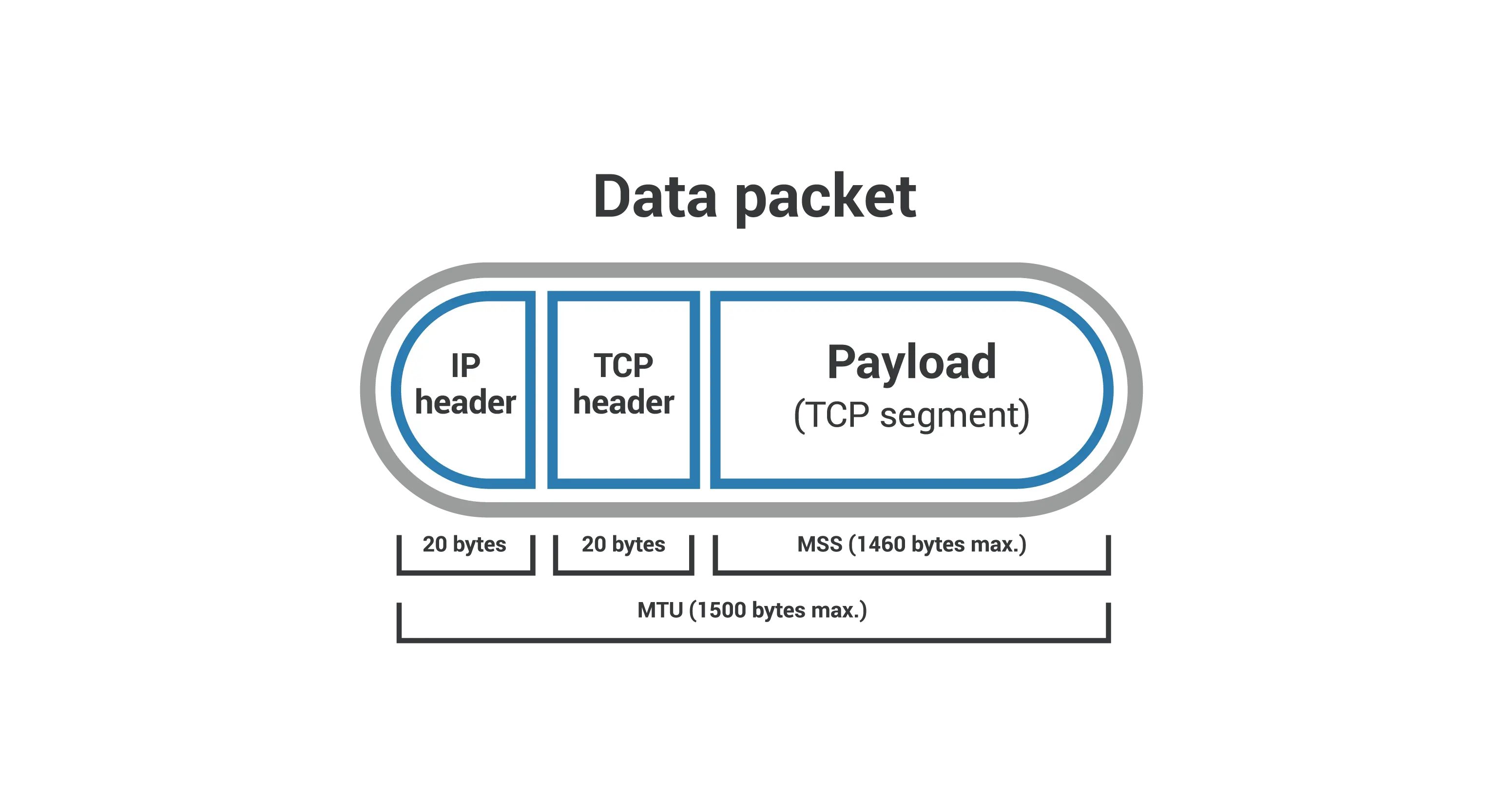MSS is used in the TCP protocol. It determines the maximum size of a TCP segment that can be sent over a network, excluding the TCP header and IP header (the non-header portion of the packet).
MTU - (TCP header + IP header) = MSS


MSS Announcement
- shared during tcp handshake
- default: 536
MTU = 576MDDS = MTU - IPHdrLen = 576 - 20 = 556MSS = MDDS - TCPHdrLen = 556 - 20 = 536- MDDS: Maximum Datagram Data Size
How to Know MSS
- The Network Driver (ND) or interface should know the MTU of the directly attached network.
- The IP should ask the Network Driver for the Maximum Transmission Unit.
- The TCP should ask the IP for the Maximum Datagram Data Size (MDDS). This is the MTU minus the IP header length (
MDDS = MTU - IPHdrLen). - When opening a connection, TCP can send an MSS option with the value equal to:
MDDS - TCPHdrLen. In other words, the MSS value to send is:MSS = MTU - TCPHdrLen - IPHdrLen
MSS Clamping
Idea: to avoid bottleneck
- Client/Server side
- When TCP finished handshake, we choose the smaller one between the two.
- MiddleBox side:
- a router along a network path has an MTU value set lower than the typical 1,500 bytes. This can result in packet loss and can be difficult to discover.
- during the TCP handshake, the server can signal the MSS for packets it is willing to receive, “clamping” the maximum payload size from the other server.